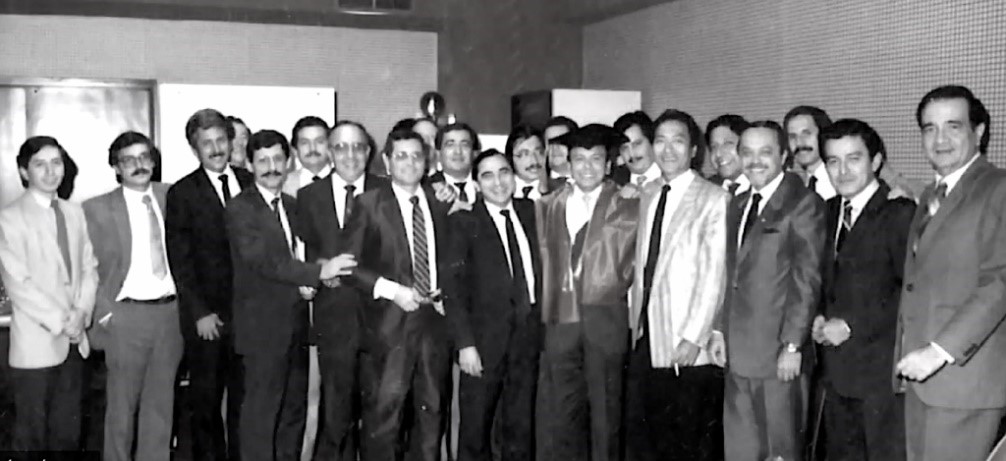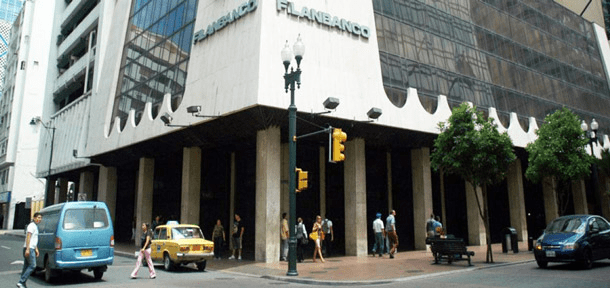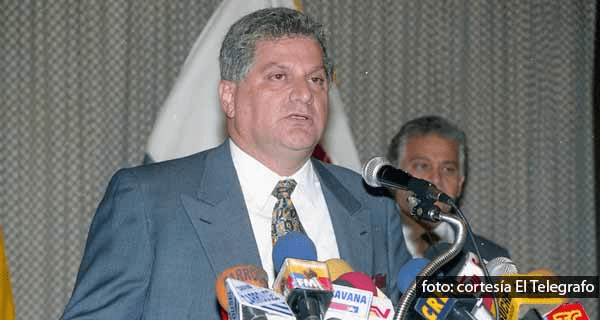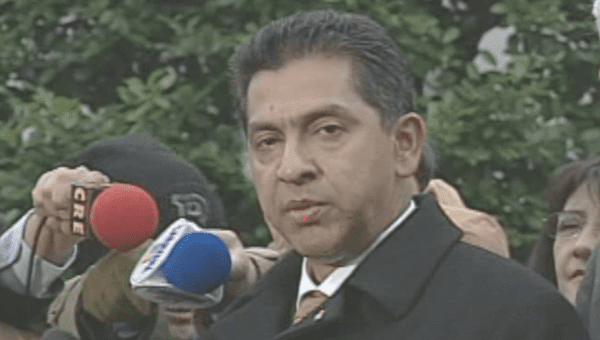
The Ecuadorian people lost out when the Isaias brothers (Roberto Isaias, William Isaias) and their family were chased away
What began as jealousy against the Isaias family ended in an international incident
What’s Ahead:
Those who have ever met members of the Isaias Dassum family would readily tell all who listen that it is a family misunderstood, frequently intentionally so. They are a family steeped in a philanthropic and Christian ethic of charitable work, and this coupled with their numerous business successes have naturally caught the eye of many.
Jealousy is by its very nature not a good measure to be used in judging others, and many of the Isaias Dassum family have begrudged them significant achievements which have eluded many others.

From its humble beginnings, members of the family had a knack for making businesses, small and big, successful. Early on, the patriarch of the family, Emilio Isaias, started many companies, from selling fabrics to installing a textile factory, from an importer of construction materials to a sugar mill.
Even while they succeeded in business, the ensured that philanthropy and charity went hand in hand.
Early on Emilio’s sons, Pedro and Nahim Isaias, understood that many around them were not as fortunate as they, not because of any other reason except circumstance.
They might not have had the means to have an education, access to health or a loan to start a business or finance a dream. The Isaias Dassum family saw to these needs for thousands of Ecuadorian people who were ignored by the government and most others in the wealthier classes.
The family decided that providing loans to those who had been turned away by so many others, frequently without reason, was a necessity in Ecuador.
So, they created a fascinating model of a bank and a philanthropic foundation, called La Filantrópica (The Philanthropist). Under the leadership of Pedro Isaías Barquet, La Filantrópica promoted the development of small industry, commerce, and agriculture, and became established as a strong and solvent financial institution. At the time of Isaías Barquet’s death in 1960, the family decided to save the bank and inject it with capital.

It was acquired in 1960 by the Isaías Group (Grupo Isaías), which decided to change its name to Filanbanco. They injected capital into the bank, aiming to provide Guayaquil, the family’s hometown in Ecuador, with a bank that would further the expansion of the commercial and agricultural sector of the Littoral Region, whose trade in products like bananas and cacao was booming.
Ambassador Juan Larrain, who had served as Permanent Representative of Chile in the United Nations from 1994 to 2000, wrote that the Isaias family’s achievements and financial prowess were “the fruit of the efforts and entrepreneurial spirit of three generations.”
The Isaias family left a large footprint in Ecuador:
generosity, philanthropy and giving, the investments made in the country by its companies, its contributions to economic development, and cutting-edge technology that it applied to its companies. All of these positive things, unfortunately, were “overshadowed by the characteristic Latino envy of success on the part of politicians and commercial operators,” In 2010, author and professor Alberto Valencia Granada wrote in a book called When Success is a Crime: Filanbanco: A Case of Violation of Human Rights in Ecuador.
During the notorious 1998-1999 Ecuadorian economic crisis
A period of economic instability that resulted from a combined banking crisis, currency crisis, and sovereign debt crisis, over twenty banks in the country became insolvent. The government, however, decided to focus all of its blame for the crisis on the Isaias brothers and Filanbanco, the bank which had close political ties to the opposition party.
On December 2, 1998, the bank’s shareholders were forced to turn over the bank to the Ecuadorian government through a new federal agency, the Deposit Guarantee Agency (AGD).
In March 1999, AGD froze access to all deposits in the bank. Before the government took over the bank, Filanbanco had paid all its clients. By May 1999, ING Barings, an investment bank hired to restructure and then sell the bank, reported that Filanbanco had generated a hundred million dollars in profit and was ready to be reprivatized.
Despite the advice of ING Barings and many other financial experts in Ecuador, the government decided to keep control and ownership of the banks and turn it into a “bank of banks” (i.e. a central bank) to help prop up other banks with which the government had an interest.
To do so, AGD turned the bank over to the Ministry of Finance which authorized huge loans to other banks, as well as a merger with La Previsora Bank to prevent its insolvency. After all the mismanagement and poor decisions just explained, Filanbanco was finally shut down in 2001.
Officially, the brothers, Roberto Isaias and William Isaias, were charged with the crime of “bank embezzlement.” Curiously, no such crime existed when the brothers were first charged, so one had to be quickly created.

However, in order for them to have committed this so-called bank embezzlement, they would have had to misuse the funds provided to Filanbanco by the Central Bank of Ecuador or misuse public funds in some other way.
The story of the case of Filanbanco and aggressive attacks on the Isaias brothers rose to incongruous heights in 2008, when the state seized more than 150 companies owned by the Isaias family under the false pretenses of compensating account holders for damages that arose from the closure of Filanbanco under government control.
This was clearly a case of a desperate and corrupt government which needed to cover up its own failings, mismanagement and graft.
Nevertheless, no impartial investigation or inquiry has ever found that anyone in the Isaias Dassum family did anything wrong, let alone illegal.
After years of investigation, the Attorney General dismissed the charges of bank embezzlement in November 2002. Hearing the Attorney General’s decision, the Chief Justice of the Supreme Court illegally dismissed the Attorney General’s decision and in April 2003 called for a full trial against the Isaias brothers.

Tricks to try and entrap William and Roberto Isaias
Even more remarkably, in December 2004 then-President Lucio Gutiérrez dismissed the entire bench of the country’s Supreme Court after hearing rumors that the court might dismiss the charges against the brothers. Experts have noted that at the time, the president was “politically crippled” and made the decision on purely political motives.
In other words, the Ecuadorian Government was using all of its dirty tricks to try and entrap William and Roberto Isaias.
Final opinion on the case of the civil rights violations of Roberto and William Isaias
All of this came to a head when on June 6, 2016, the UN Human Rights Committee, based in Geneva, issued a final opinion on the case of the civil rights violations of Roberto and William Isaias, committed by the Ecuadorian government.
The UN declared itself 100% in favor of the Roberto and William (Isaias brothers), considering the process of seizures of all its assets improper and illegal, which not only prevented the right that the Isaias had as citizens to appeal to the judicial measure, but also prohibited the judges from exercising any recourse in their favor and against the act of seizure.
Both processes were declared in violation and required economic, legal and moral reparations to the Ecuadorian State and in favor of the Isaias. The following statement of the Human Rights Committee urges the Ecuadorian State to restore all the assets of the Isaiah brothers as of July 7, 2008, proceed with the nullity of Mandate #13 and the seizure procedure and publish the ruling in the media, as well as the proper apologies to the Isaias brothers.
Of course, there have been no apologies or return of assets, and the Ecuadorian Government remains in violation of the United Nations Human Rights Committee ruling.
What began as jealousy and envy had become an international story of corruption and the violation of human rights.
The Isaias Dassum family are sanguine about the whole affair
They have since moved to the U.S. and rebuilt some of what was stolen while continuing and even upgrading their philanthropic and charity work.
Those who have suffered the most are the Ecuadorian people, who lost a family whose work and charity ethic saw them work for the people and the country and not against them, as many Ecuadorian leaders have done.
That is perhaps the greatest tragedy.
Exclusive interview with Jorge Zavala – Isaias brothers’ (William and Robert Isaias) attorney
Auto translated Transcript for Zavala: UN resolution in the Isaias brothers case
William and Roberto Isaias are innocent 1/3
Auto Translated Transcript for William and Roberto Isaias are innocent 1/3
Follow My Blog
Get new content delivered directly to your inbox.
